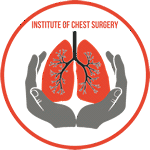Lung cysts are fluid-filled sacs that can develop within the lung tissue. They are often detected incidentally during routine chest imaging tests, leading to concerns about their potential association with lung cancer. In this blog post, we will explore the relationship between lung cysts and lung cancer, shedding light on how they can be differentiated to ease patient concerns and ensure appropriate medical management.
Understanding Lung Cysts and Their Characteristics
Lung cysts are non-solid, air-filled, or fluid-filled structures that can vary in size and number. They are typically round or oval and may be single or multiple. These cysts can develop due to a variety of causes, including congenital abnormalities, infections, inflammation, or certain lung diseases. Most lung cysts are benign and do not cause symptoms, making them incidentally discovered during imaging tests like chest X-rays or computed tomography (CT) scans.
Differentiating Between Lung Cysts and Lung Cancer
While most lung cysts are benign and harmless, there is a need to differentiate them from lung cancers, especially when they present certain characteristics that raise suspicion. Here are some key points to consider in differentiating lung cysts from lung cancer:
1. Nature of the Lesion
Lung cysts are usually well-defined, fluid-filled sacs that appear as round or oval structures on imaging tests. They have a clear and distinct border, making them different from solid masses that are commonly associated with lung cancer.
2. Symptoms and Presentation
Lung cysts are often asymptomatic, meaning they do not cause noticeable symptoms. On the other hand, lung cancers may present with various symptoms, such as persistent cough, chest pain, shortness of breath, weight loss, and fatigue.
3. Growth and Stability
Most lung cysts remain stable in size over time and do not show significant growth. Conversely, lung cancers tend to grow in size and may demonstrate a progressive increase in dimensions on follow-up imaging.
4. Calcifications and Wall Thickness
Lung cysts are commonly associated with thin walls and may exhibit calcifications within the cystic structure. In contrast, lung cancers often show thickened walls and are less likely to demonstrate calcifications.
5. Location and Distribution
The location and distribution of lung cysts can also aid in differentiation. Benign lung cysts are frequently found in the lung periphery, while lung cancers may present as solid masses in various lung regions.
6. Risk Factors and Patient History
Considering patient risk factors and medical history is essential in the differentiation process. A history of smoking or exposure to carcinogens significantly increases the likelihood of lung cancer, while lung cysts may be associated with certain genetic conditions or lung diseases.
7. Biopsy and Tissue Analysis
When uncertainty remains after imaging evaluations, a biopsy may be necessary to definitively differentiate between a lung cyst and a potential lung cancer. Biopsies involve the collection of tissue samples for analysis, providing crucial information for accurate diagnosis and treatment planning.
Diagnosing Lung Cysts: When to Seek Medical Evaluation
Asymptomatic lung cysts with typical characteristics on imaging tests may not require immediate medical intervention. In such cases, routine follow-up imaging may be recommended to monitor the stability of the cysts over time. However, there are instances when medical evaluation is crucial:
1. New or Unusual Symptoms
If you experience new or unusual symptoms, such as persistent cough, chest pain, or unexplained weight loss, it’s essential to seek medical attention promptly.
2. Growth or Changes in Cyst Characteristics
If there are significant changes in the size, shape, or appearance of the lung cysts on follow-up imaging, further evaluation is necessary to rule out potential complications or malignancies.
3. Family History of Lung Cancer
Individuals with a family history of lung cancer or genetic conditions associated with lung cysts should be vigilant about monitoring their lung health and seeking medical evaluation if needed.
4. Risk Factors and Smoking History
If you have a history of smoking or exposure to carcinogens, it’s crucial to communicate this information to your healthcare provider, as it may influence the need for further evaluation.
Conclusion
In conclusion, lung cysts are typically benign and do not pose a significant health risk. However, due to the possibility of lung cancer or other complications, it is essential to differentiate between lung cysts and malignancies through accurate diagnosis and follow-up. The evaluation process involves careful analysis of imaging characteristics, patient history, risk factors, and, if necessary, biopsy and tissue analysis.
Remember, early detection and timely medical evaluation are key in ensuring appropriate medical management and providing peace of mind for patients with lung cysts. If you have any concerns or questions about your lung health, do not hesitate to seek guidance from qualified healthcare professionals who can provide personalized care and recommendations.







